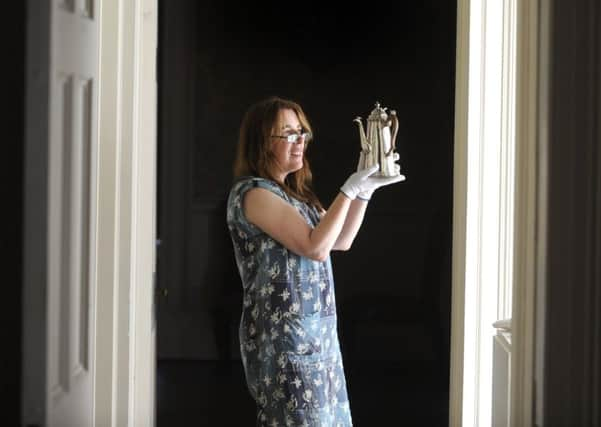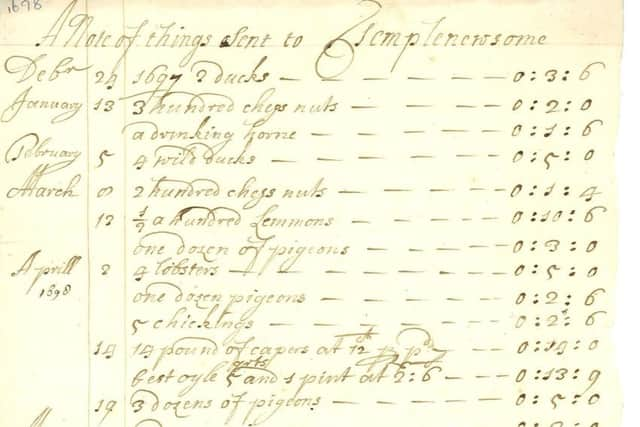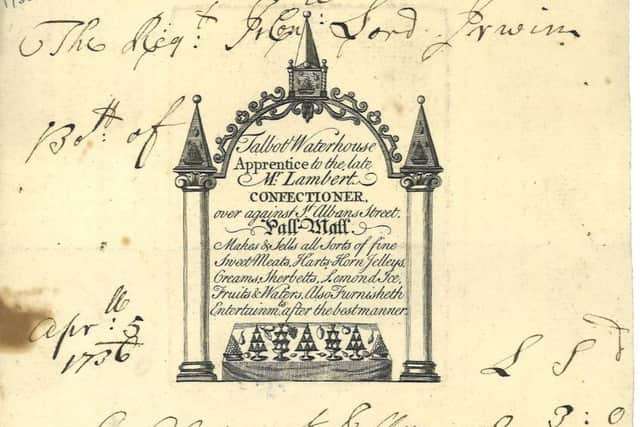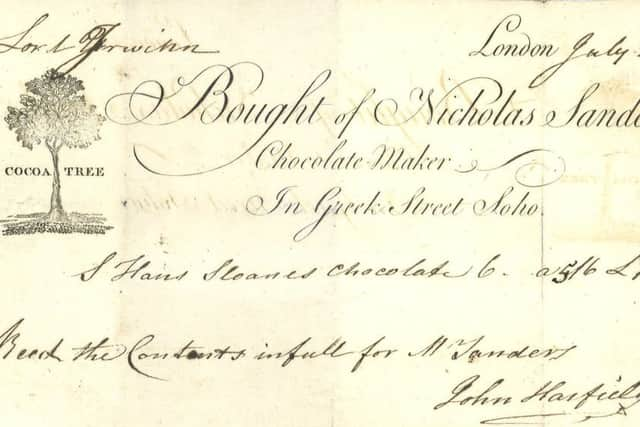These rediscovered documents prove Leeds folk became chocoholics centuries ago


To celebrate World Chocolate Day tomorrow, experts have plucked the bill from a vast collection of archives in the city after more than 240 years.
It shows that centuries ago, fashionable nobles at Leeds’ Temple Newsam House became part of an 18th century chocolate revolution, satisfying their craving for the sweet treat with special deliveries from exclusive London emporiums.
Advertisement
Hide AdAdvertisement
Hide AdDrafted in beautiful copperplate handwriting, the bill from Nicholas Sanders Chocolate Makers in Greek Street, Soho, dates from 1774, when Lord Ingram of Temple Newsam paid the handsome sum of one pound and thirteen shillings for a taste of cocoa pioneer Hans Sloane’s famous drinking chocolate.


British physician and naturalist Sloane travelled to Jamaica in the early 1700s, encountering cocoa and reportedly developing his own recipe for drinking chocolate mixed with milk, which became hugely popular back in the UK.
By 1797, huge demand from aristocrats like those at Temple Newsam had made the drink so popular among the upper classes that it became known as “the drink of the gods.”
The chocolatier’s bill of sale is one of a number of newly-rediscovered “shopping lists” which experts discovered during recent research at the West Yorkshire Archive Service, shedding new light on life and history at the historic house.
Advertisement
Hide AdAdvertisement
Hide AdThe collection also includes items ordered in 1736 from Talbot Waterhouse, a confectioner based in Pall Mall, who supplied the estate with specialities including sugary jellies, marmalade and orange cakes.


And even further back in 1698, tastes at the house were more savoury, with fish, herring and gallons of vinegar the order of the day.
Leila Prescott, curator at Temple Newsam, said: “As a former home to some of Britain’s most prominent aristocrats, Temple Newsam would have been a very lavish and flamboyant place and there would have been an expectation that both residents and guests would have indulged in the finest foods and treats.
“Hot chocolate in particular became hugely popular among British nobility in the 18th Century and having orders specially sent up from exclusive London emporiums was very much a status symbol and a statement about the life of luxury those who lived here enjoyed.
Advertisement
Hide AdAdvertisement
Hide Ad“Documents like these are always an exciting find because give us a unique, direct and first-hand insight into what life at the house was actually like for those who lived here centuries ago.”


The lists were found as part of research into Temple Newsam’s current Beer exhibition, which can be seen until October and features more stories about life on Temple Newsam Estate through the eyes of the people who lived, worked, brewed and drank there.
For more details, visit: https://www.leeds.gov.uk/museumsandgalleries/Pages/Beer-Exhibition.aspx